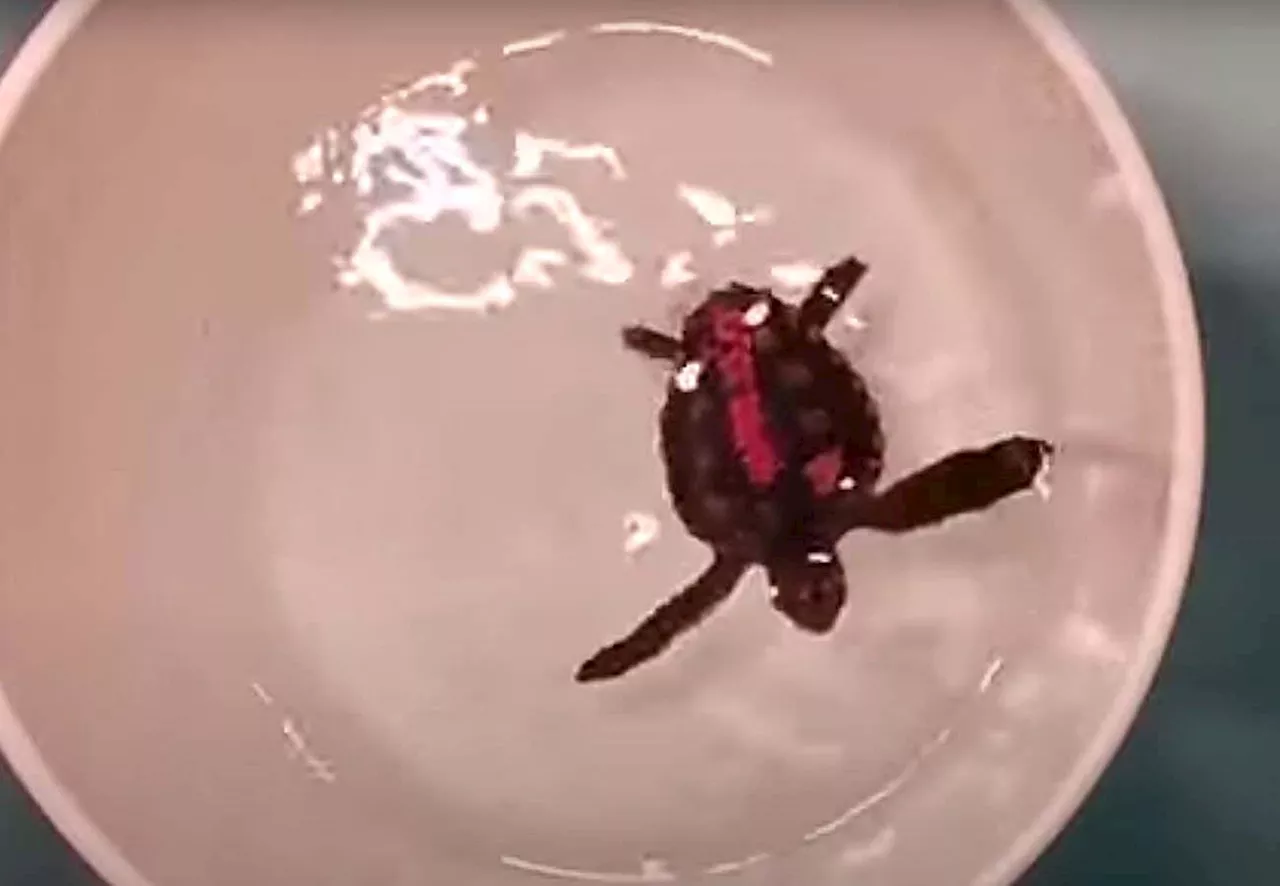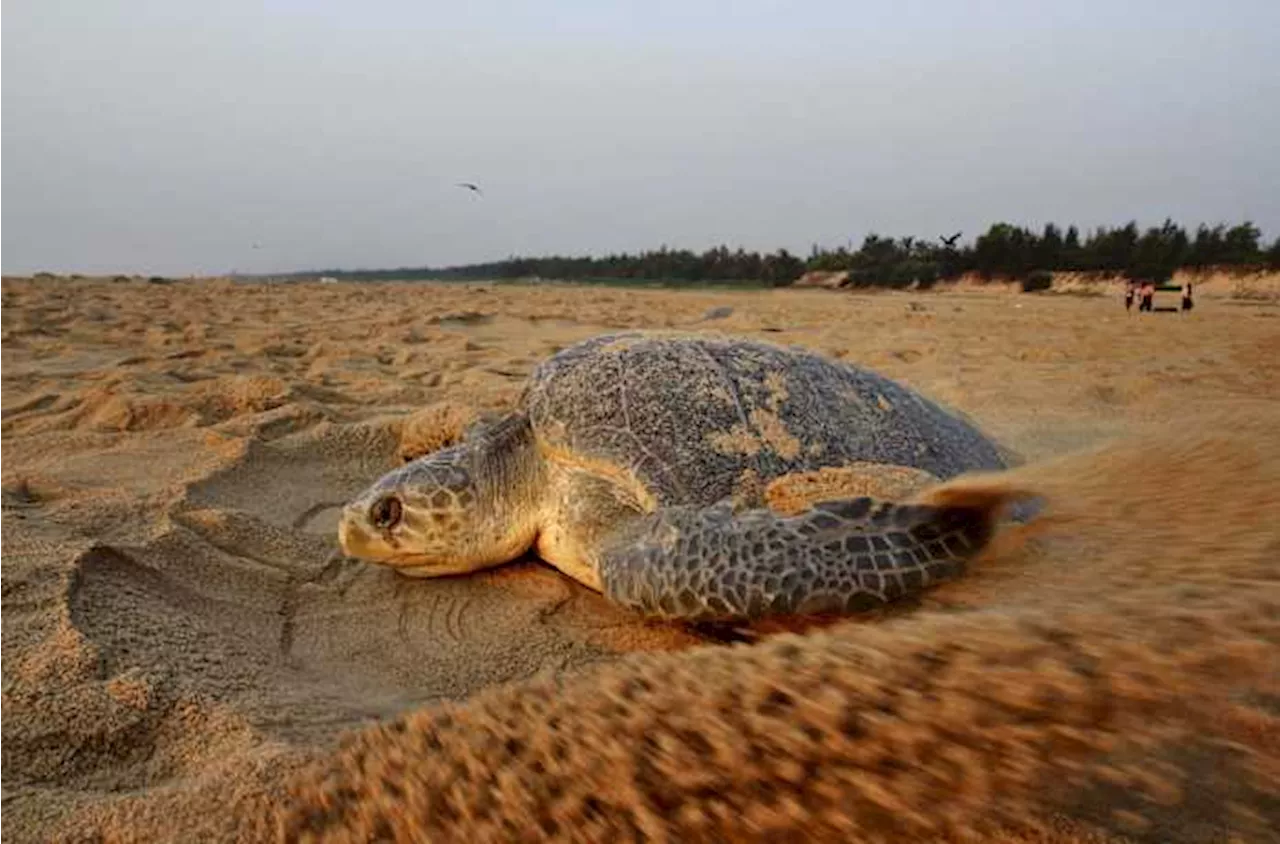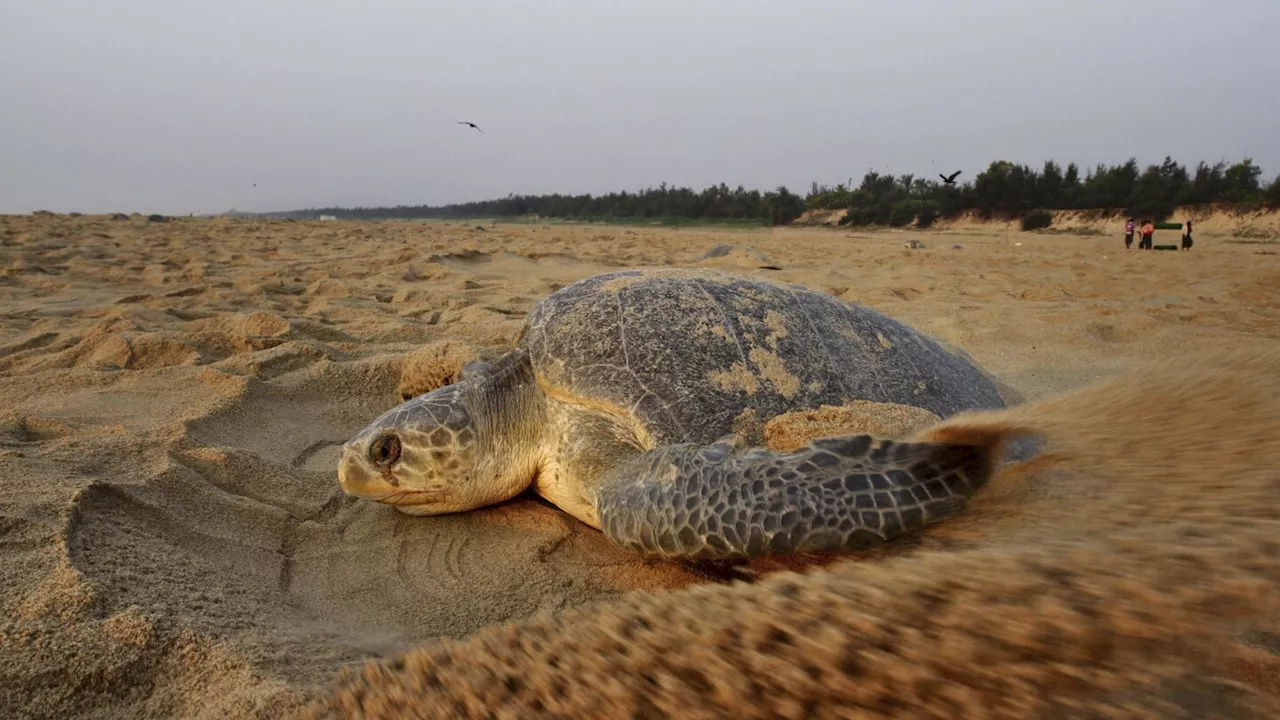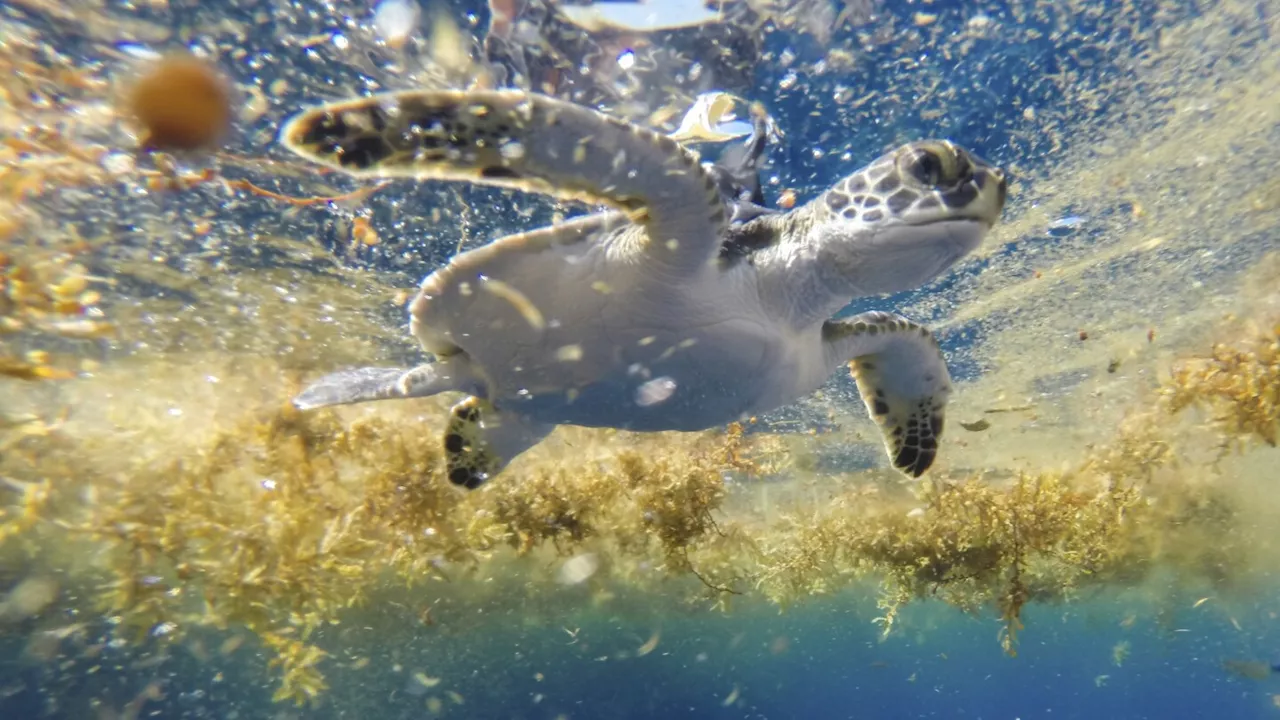A new study reveals that loggerhead sea turtles, the most abundant sea turtle species nesting in the United States, learn and memorize the magnetic fields of specific locations, particularly those associated with food sources. This discovery sheds light on their remarkable navigational abilities and raises concerns about the impact of radiofrequency waves from devices like mobile phones on their migration.
Sea turtles are renowned for their incredible migrations, traveling thousands of miles across vast oceans with few visible landmarks. Now, a new study, published Wednesday in the journal Nature, reveals loggerhead turtles , the most abundant sea turtle species nesting in the United States, learn the magnetic fields of specific geographic locations. This superpower likely helps them get back to ecologically important areas for nesting and feeding.
While earlier research has unveiled turtles consistently revisit specific sites and also use magnetic fields to navigate, the researchers said this study is the first of its kind to determine loggerheads memorize these magnetic fields, particularly ones associated with food sources, to return to once they finish migrating. Researchers found captive juvenile loggerheads respond to magnetic conditioning by what the team described as “dancing” in anticipation of food in fields where they were previously fed, indicating they associate magnetic cues with feeding sites. The study also unlocked a key finding in turtle navigation. Loggerheads rely on two distinct magnetic systems — a magnetic map for tracking locations and a magnetic compass for orienting direction. When loggerheads are exposed to radiofrequency, or RF, waves — the same type of radiation emitted by devices such as mobile phones and radio transmitters — their magnetic map remains stable, while their compass is disrupted. This revelation raises conservation concerns, as boating activity and device usage near nesting beaches may interfere with turtles’ ability to migrate, according to lead study author Dr. Kayla Goforth, a postdoctoral research associate in the department of biology at Texas A&M University, who worked on the research as a doctoral student at the University of North Carolina, Chapel Hill. Researchers suggest minimizing RF waves in key turtle habitats to help protect these ancient sea creatures. What makes turtles ‘dance’ Turtles can detect all Earth-strength magnetic fields, ranging from around 25,000 nanoteslas to 65,000 nanoteslas — a measure of magnetic field intensity, according to Goforth. To understand the magnetic receptors of turtles, researchers collected 14 to 16 newly hatched loggerhead turtles each August from 2017 to 2020. The turtles emerged from eight to 10 different nests from Bald Head Island, North Carolina. The team housed the turtles in individual tanks with controlled water temperatures and a standard diet to simulate natural seawater conditions. Previous turtle experiments have used magnetic intensities with at least a 2,000-nanotesla field difference, but Goforth and her team chose locations along the US East Coast throughout the Atlantic Ocean and developed a coil system to produce fields between 2,000 and 10,000 nanoteslas for variation. Over a two-month conditioning period, the study team placed the turtles in small buckets of artificial seawater and exposed them to two different magnetic fields for equal durations. One field matched the magnetic force of a site in the Gulf of Mexico and was associated with food (the “rewarded” field), while the other simulated the magnetic flux of a site near New Hampshire and had no food (the “unrewarded” field). Once the conditioning ended, turtles were tested again in both magnetic fields, but this time, neither contained food, allowing researchers to determine whether the turtles had learned to associate the “rewarded” field with feeding. In the “rewarded” field, all the marine reptiles exhibited some extent of “turtle dance” behavior, which included tilting their bodies vertically, holding their heads near or above the water’s surface, opening their mouths, quickly moving their front flippers, and sometimes even spinning in place, according to the study. To confirm the consistency of these findings across different sites, the researchers conducted the same experiment using magnetic fields that mimicked those off the coasts of Cuba versus Delaware, Maine versus Florida, and two additional locations. In each of the five trials, about 80% of the turtles showed more “dancing” in the “rewarded” fields compared with the “unrewarded,” demonstrating that this skill is used globally, not just in one specific location. While the “turtle dance” is particularly charming, Goforth noted this behavior likely only occurs in captivity. However, the movement pattern provides a useful measure to show whether the turtles learned the magnetic field and correlated it to food. After the initial experiment, the scientists tested 16 turtles again four months later to evaluate their long-term memory. Even without additional reinforcement, 80% of the loggerheads showed greater “dancing” in the “rewarded” field, although the overall amount of movement was lower, Goforth said
Sea Turtles Loggerhead Turtles Magnetic Navigation Conservation Radiofrequency Waves
United States Latest News, United States Headlines
Similar News:You can also read news stories similar to this one that we have collected from other news sources.
 Baby Sea Turtles 'Dance' to Reveal Two Magnetic SensesResearchers discovered that baby loggerhead sea turtles perform a unique 'dance' when anticipating food, which is linked to a magnetic field. This behavior helped scientists understand how these turtles navigate during their long journeys. They found that these turtles possess two distinct geomagnetic senses: one for mapping their location ('GPS') and another for compass direction.
Baby Sea Turtles 'Dance' to Reveal Two Magnetic SensesResearchers discovered that baby loggerhead sea turtles perform a unique 'dance' when anticipating food, which is linked to a magnetic field. This behavior helped scientists understand how these turtles navigate during their long journeys. They found that these turtles possess two distinct geomagnetic senses: one for mapping their location ('GPS') and another for compass direction.
Read more »
 Loggerhead Turtles Fought Extinction With Fervent FuckeryCritically endangered loggerhead turtles have rebounded from the brink of extinction thanks to an unprecedented surge in mating activity. The International Union for Conservation of Nature (IUCN) credits their fervent fucking for their remarkable recovery.
Loggerhead Turtles Fought Extinction With Fervent FuckeryCritically endangered loggerhead turtles have rebounded from the brink of extinction thanks to an unprecedented surge in mating activity. The International Union for Conservation of Nature (IUCN) credits their fervent fucking for their remarkable recovery.
Read more »
 Over 400 Endangered Sea Turtles Wash Ashore in IndiaMore than 400 olive ridley turtles have been found dead on India's east coast, raising concerns about the species' declining population. Experts blame the deaths on large fishing nets and call for greater conservation efforts.
Over 400 Endangered Sea Turtles Wash Ashore in IndiaMore than 400 olive ridley turtles have been found dead on India's east coast, raising concerns about the species' declining population. Experts blame the deaths on large fishing nets and call for greater conservation efforts.
Read more »
 Over 400 Endangered Sea Turtles Wash Ashore in IndiaOver 400 endangered olive ridley turtles have washed ashore on India's east coast near Chennai in recent weeks, a concerning event not seen in over two decades. Conservationists attribute the deaths to fishing nets and worry about a decline in nesting numbers.
Over 400 Endangered Sea Turtles Wash Ashore in IndiaOver 400 endangered olive ridley turtles have washed ashore on India's east coast near Chennai in recent weeks, a concerning event not seen in over two decades. Conservationists attribute the deaths to fishing nets and worry about a decline in nesting numbers.
Read more »
 Hundreds of dead sea turtles are washing ashore on India's coastOver 400 endangered sea turtles have washed ashore on India’s east coast near the city of Chennai in the last two weeks in an event not witnessed in over two decades. Olive ridley turtles travel thousands of miles for ideal nesting conditions on India’s coast.
Hundreds of dead sea turtles are washing ashore on India's coastOver 400 endangered sea turtles have washed ashore on India’s east coast near the city of Chennai in the last two weeks in an event not witnessed in over two decades. Olive ridley turtles travel thousands of miles for ideal nesting conditions on India’s coast.
Read more »
 Scientists solve the mystery of sea turtles' 'lost years'Using satellite trackers, scientists have discovered the whereabouts of young sea turtles during a key part of their lives. For decades, scientists have wondered about what happens during the so-called lost years between when tiny hatchlings leave the beach and when they return to coastlines nearly grown — a span of about one to 10 years.
Scientists solve the mystery of sea turtles' 'lost years'Using satellite trackers, scientists have discovered the whereabouts of young sea turtles during a key part of their lives. For decades, scientists have wondered about what happens during the so-called lost years between when tiny hatchlings leave the beach and when they return to coastlines nearly grown — a span of about one to 10 years.
Read more »
